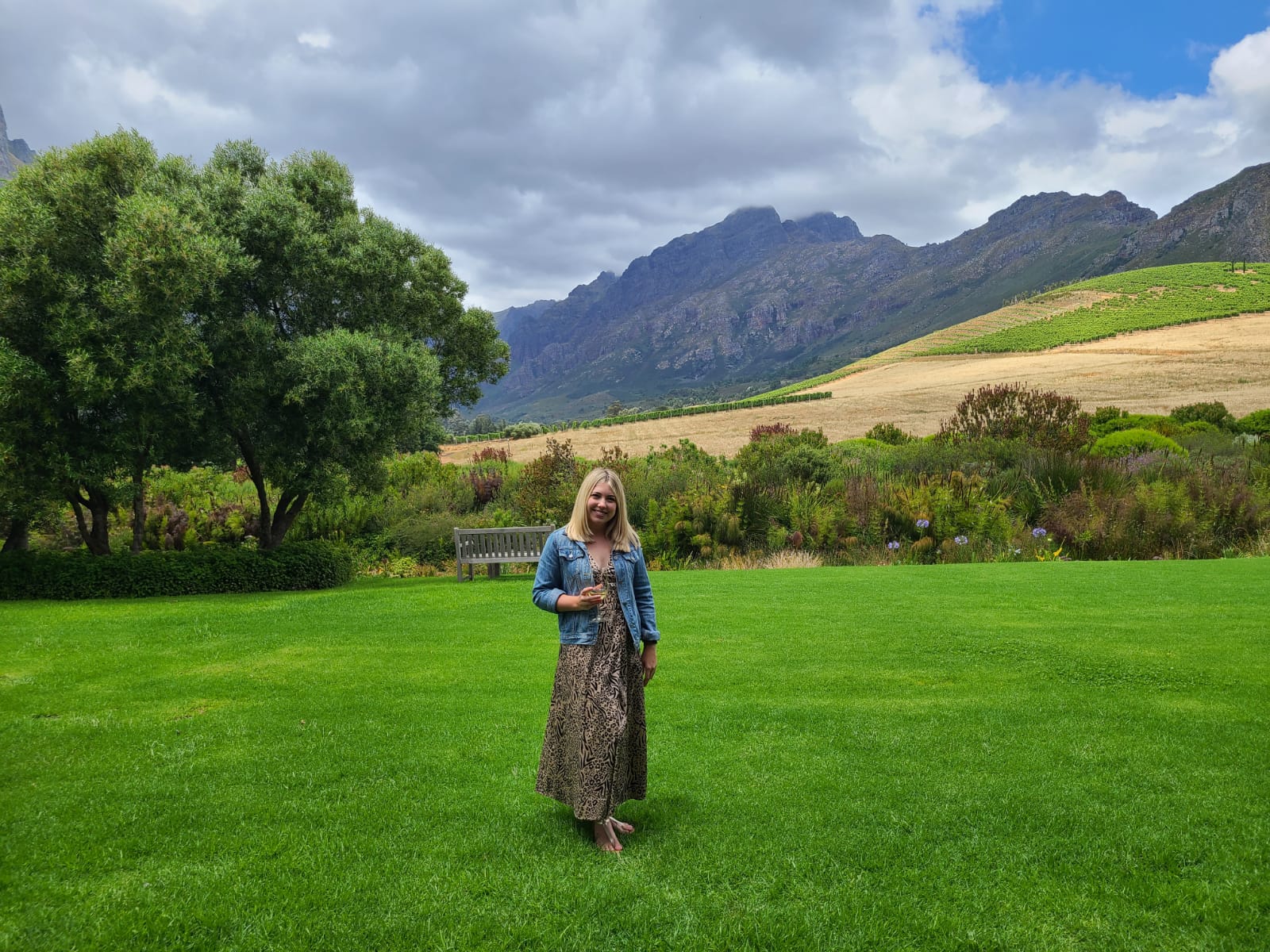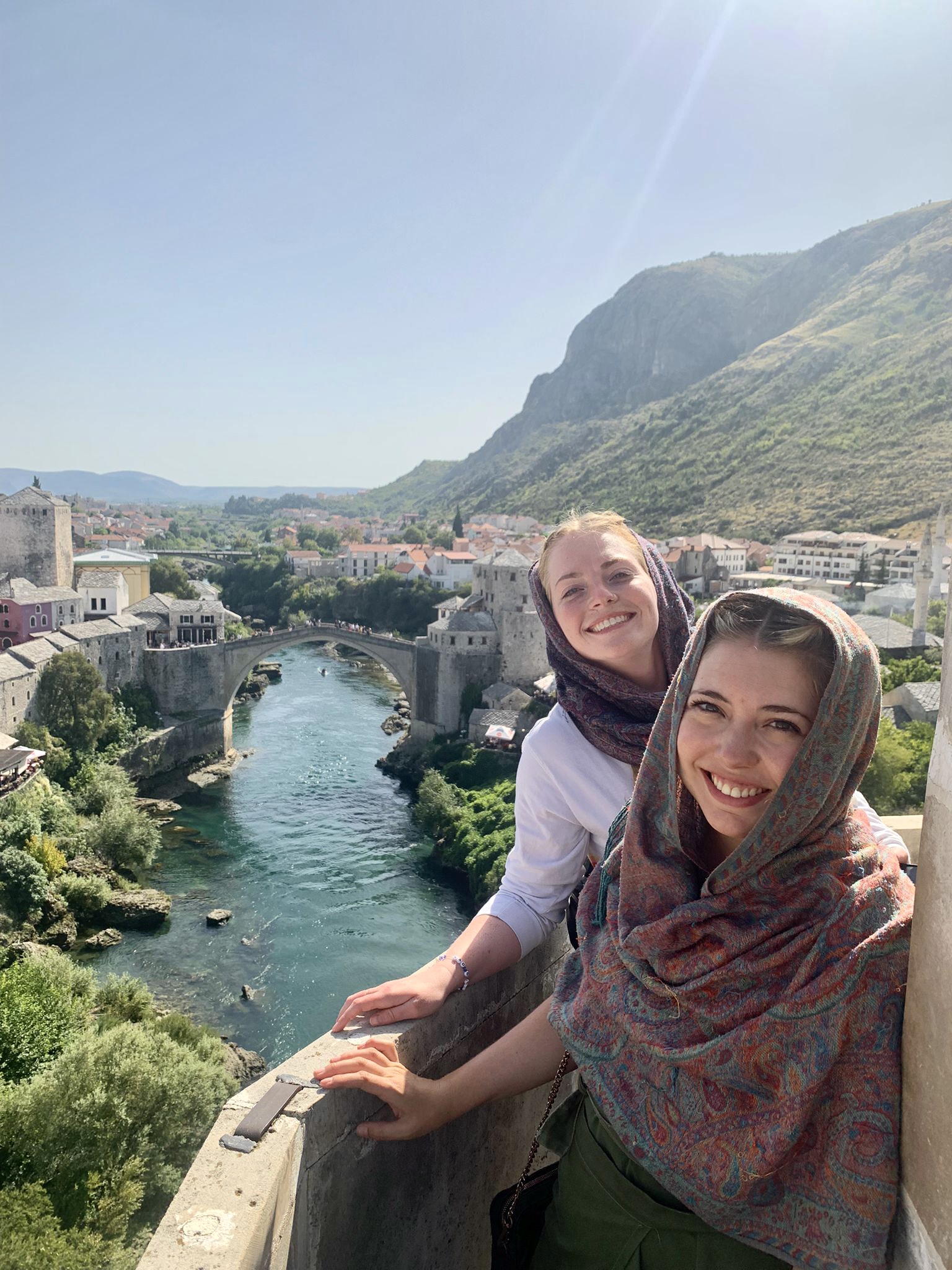Photo courtesy of Havilland Voss
Why work remotely from home when you can be on the coast of Spain or hike up the mountains and work at the same time?
Havilland Voss doesn’t trek the globe in her free time or as a vacation.
This 29-year-old Lake Highlands grad takes work along and couch-surfs with friends and family when home for a week or two. As the lead data analyst for Podsights, a podcast data and advertising company for brands and agencies, Voss has the flexibility of full remote work.
In August 2021, Voss joined Remote Year. This program of 3,000 adventurers between the ages of 21-77 allows anyone with a remote job that grants approval to participate. Remote Year has sent her to five countries, including Spain and Portugal, so she can be in a different country every month.
”I was actually on a program previously. I had originally started on one in January 2020,” Voss says. “I was seven weeks into it when COVID hit. I finally got to restart in August.”
The Europe portion wrapped up in November; next was Africa. After that is Latin America for four months. And the best part?
With Remote Year, anyone with a remote job, whether it’s part-time or full-time, can travel with a monthly fee starting at $2,850. That’s for a one-month excursion, but there are also four- and 12-month trip options.
“Basically, you just sign up, and then you’re paying a monthly fee, and they provide apartments, co-working space, book flights,” she says. “They also have a bunch of events and activities in those cities. We have a local person who lives there who helps kind of coordinate those things.”
Of all the places she’s seen so far, Croatia sticks out in memories because she spent a lot of time with the locals.
“They had this couple who was pretty old, and they made soparnik, which is a Croatian traditional dish (pie typically filled with chard, onion, parsley and flaky dough), and it’s only supposed to be homemade,” Voss says. The dish originated in what was once the Republic of Poljica in Croatia.

“It’s not supposed to be good if you get it at a restaurant, so they invited us to their home and made the soparnik for us,” she says. “It was really cool because it was something pretty authentic, and they also didn’t speak English.”
Another memorable travel moment is when she and some friends went from Croatia to Bosnia and Herzegovina, a neighboring country to the south.
The first stop was Dubrovnik, Croatia, featured in The Daily Beast for its unique rental houses. From that point, they drove more than two hours from the coast of Croatia through Bosnia and Herzegovina to get to the city of Mostar.
“I think it’s like the most predominantly Islamic country I’ve ever been to,” she says. “I haven’t really been to that region of the world. Just kind of something I didn’t even expect, getting to go to a place like that.”
In previous work as a consultant, she was going across the country on assignments. But she’s always had an interest in the history and cultures of other countries.
“No matter where you go, you can find a way to make a connection with someone even if you don’t think you have anything in common,” she says.






